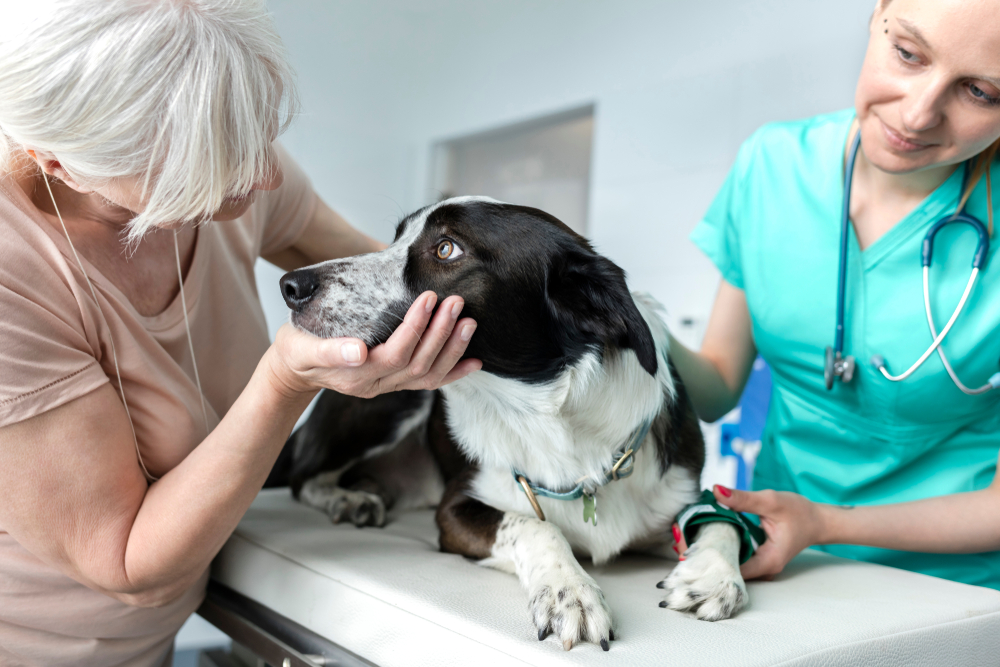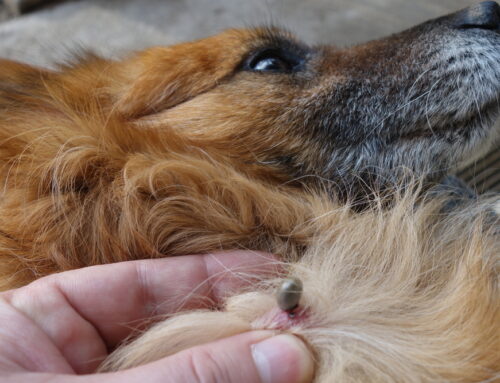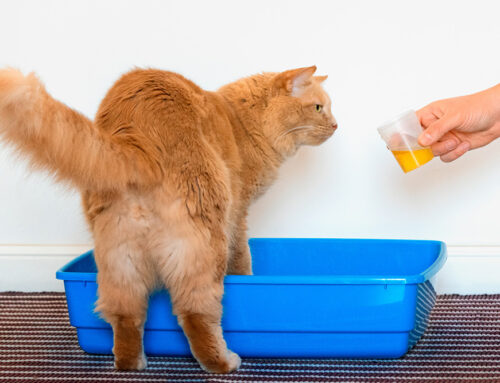Helping Senior Pets Live Comfortably With Chronic Pain
When pets age, chronic pain often becomes part of daily life- but it doesn’t have to. Gentle exercise, joint support, and pain control therapies help older animals stay active and happy. Recognizing discomfort early is the first step toward compassionate care.
At Star of Texas Veterinary Hospital in Austin, our Fear Free certified team specializes in senior pet wellness, offering comprehensive diagnostic services and integrative treatments that address pain at its source while keeping your pet comfortable throughout the process.
Why Older Pets Conceal Their Discomfort
In the wild, showing weakness attracts predators. This survival instinct remains deeply ingrained in domestic animals, causing them to mask pain even when they’re suffering. What looks like normal slowing down may actually be treatable arthritis, dental disease, or another painful condition.
Dogs might refuse their usual walks or hesitate at the stairs. Cats may stop jumping to their favorite perch or groom less frequently. These subtle behavioral shifts are often the only signals that something hurts.
Early recognition prevents minor discomfort from escalating into crisis. Our Fear Free approach helps anxious senior pets feel safe during examinations, making it easier to identify pain before it becomes debilitating. When pets feel secure, they’re more likely to show us where they hurt.
Recognizing Pain Symptoms in Senior Dogs
Common Signs of Canine Discomfort
Older dogs communicate pain through changes in movement, behavior, and temperament. Recognizing these signs early allows for intervention that preserves mobility and quality of life.
Watch for these indicators:
- Reluctance to climb stairs or jump into the car
- Stiffness after resting, especially in the morning
- Panting while at rest or during mild activity
- Changes in posture, such as a hunched back or lowered head
- Irritability when touched in specific areas
- Decreased interest in play or social interaction
The pet pain and mobility guide provides detailed information on identifying and addressing mobility challenges in aging dogs. Many orthopedic and joint conditions respond well to early treatment, making timely diagnosis essential.
Our veterinarians perform thorough orthopedic assessments during senior wellness visits, checking range of motion, joint stability, and muscle tone to detect problems before they limit your dog’s daily activities.
Identifying Discomfort in Senior Cats
Subtle Indicators of Feline Pain
Cats are masters at hiding illness and injury. Their independent nature and stoic demeanor make pain recognition challenging, but careful observation reveals important clues.
Common signs in aging cats include:
- Jumping onto lower surfaces instead of counters or windowsills
- An unkempt or matted coat from reduced grooming
- Hiding more frequently or withdrawing from family interaction
- Avoiding the litter box due to difficulty climbing in
- Decreased appetite or eating from only one side of the mouth
- Changes in sleep patterns or increased vocalization
The Feline Grimace Scale offers a scientific tool for assessing pain through facial expressions. Our team uses this validated method during examinations and post-surgically to identify discomfort that cats work hard to conceal. Star of Texas provides a cat-friendly environment with a dedicated feline exam room and separate waiting area, reducing stress that can mask pain behaviors during veterinary visits.
Understanding Common Sources of Chronic Pain
Multiple conditions contribute to ongoing discomfort in senior pets. Identifying the underlying cause allows for targeted treatment that addresses the problem rather than just masking symptoms.
Frequent culprits include:
- Arthritis: Joint inflammation causes stiffness, reduced mobility, and chronic aching
- Dental disease: Periodontal infections, fractured teeth, and oral tumors create constant mouth pain
- Cancer: Tumors press on organs, bones, or nerves, causing localized or widespread discomfort
- Soft-tissue injuries: Ligament tears, muscle strains, and tendon damage often develop gradually
- Neuropathic pain: Nerve damage from diabetes, spinal disease, or other conditions creates burning or tingling sensations
Dental problems deserve special attention. Many senior pets suffer silently from painful conditions related to oral health, including abscessed teeth and severe gum disease. Regular dental care prevents these issues from progressing to the point where eating becomes uncomfortable.
Comprehensive Assessment of Senior Pet Pain
Diagnostic Tools for Accurate Evaluation
Effective pain management starts with understanding what hurts and why. Our diagnostic approach combines physical examination with advanced imaging and laboratory testing.
The evaluation process typically includes:
- Orthopedic and neurologic examinations to assess joint function, muscle strength, and nerve responses
- Digital radiographs that reveal arthritis, bone abnormalities, and internal masses
- Ultrasound imaging for detailed views of soft tissues and organs
- In-house blood panels to check for metabolic conditions and organ function
- Advanced imaging like CT scans when complex problems require detailed visualization
This thorough approach ensures we identify all sources of pain, not just the most obvious ones. A limping dog may have both arthritis and a concurrent abdominal tumor, each requiring different treatment strategies.
Creating Effective Multi-Modal Pain Relief
Pharmaceutical Options for Comfort
Modern veterinary medicine offers numerous medications that control pain while minimizing side effects. The right combination depends on your pet’s specific condition, overall health, and individual response.
Common pharmaceutical approaches include:
- NSAIDs (non-steroidal anti-inflammatory drugs) for inflammation and joint pain
- Opioids for moderate to severe acute pain
- Gabapentin for neuropathic pain and chronic discomfort
- Monoclonal antibody therapies like Librela for dogs and Solensia for cats, which specifically target pain mediators
Understanding pain relief medications helps pet owners make informed decisions about treatment options. Our veterinarians explain how each medication works, potential side effects, and what to monitor at home.
Rehabilitation and Integrative Therapies
Beyond pharmaceuticals, physical therapies address pain through healing, strengthening, and improved mobility. These approaches work synergistically with medications for comprehensive relief.
Cold laser therapy reduces inflammation and promotes tissue healing at the cellular level. The treatment is painless and particularly effective for arthritis, wound healing, and post-surgical recovery.
Acupuncture benefits include pain reduction, improved circulation, and enhanced overall well-being. Our acupuncture services integrate traditional Chinese veterinary medicine with conventional treatments for optimal results.
Physical manipulation also plays a role. Massage involves providing gentle tissue work to reduce muscle tension, improve flexibility, and strengthen the bond between pets and their owners through therapeutic touch.
Home Environment Modifications
Simple changes at home significantly improve comfort for pets with chronic pain. These adjustments reduce strain on affected joints and make daily activities easier.
Assistive devices like ramps, harnesses, and orthopedic beds help dogs navigate their environment without aggravating painful conditions. For cats, providing arthritis-friendly home adjustments such as lower litter boxes and easy-access food stations reduces physical demands.
Our team provides personalized recommendations based on your pet’s specific limitations and your home layout, ensuring modifications actually address your pet’s needs.
Proactive Wellness for Long-Term Comfort
Prevention Through Regular Care
Consistent veterinary attention catches problems early, when treatment is most effective and least invasive. Regular monitoring allows for treatment adjustments as conditions evolve.
Maintaining healthy weight, providing appropriate exercise, and addressing dental disease before it becomes severe all contribute to reduced pain throughout your pet’s senior years. Early detection through routine visits remains the foundation of effective pain management.
Star of Texas provides care for your pet in the way that they are most comfortable- whether it’s in the exam room, our beautiful backyard, our Cat-Friendly rooms, telemedicine, curbside, or extended Fear-Free and minimal touch appointments. We even offer the option for Happy Victory Visits and Pre-Visit-Pharmaceuticals to make sure you and your pet have the best experience possible.
Recognizing When Pain Becomes Critical
Some situations require immediate veterinary attention. Knowing the difference between chronic discomfort and acute crisis protects your pet from dangerous complications.
Seek urgent care if your pet experiences:
- Sudden collapse or complete inability to walk
- Continuous crying, panting, or aggressive behavior
- Severe swelling in any body area
- Rapid or labored breathing
- Straining to urinate without producing urine
- Uncontrolled bleeding or trauma
Star of Texas provides emergency support during business hours for established patients experiencing urgent pain-related crises. Quick intervention often prevents conditions from becoming life-threatening. When pain does require more intensive management, we offer quality of life consultations to help families make informed decisions about ongoing care and end-of-life options when the time comes.
Supporting Your Senior Pet’s Comfort and Joy
Chronic pain doesn’t have to define your pet’s golden years. Through early recognition, comprehensive diagnosis, and multi-modal treatment, senior animals maintain active, comfortable lives well into their later years.
Small changes in behavior signal important shifts in physical well-being. Trust your observations and contact our team when something seems different. Our Fear Free certified professionals create stress-free experiences that make regular monitoring easier for pets who need frequent assessment.
Request an appointment today to discuss your senior pet’s comfort and develop a personalized pain management plan that keeps them happy, active, and engaged with life.







